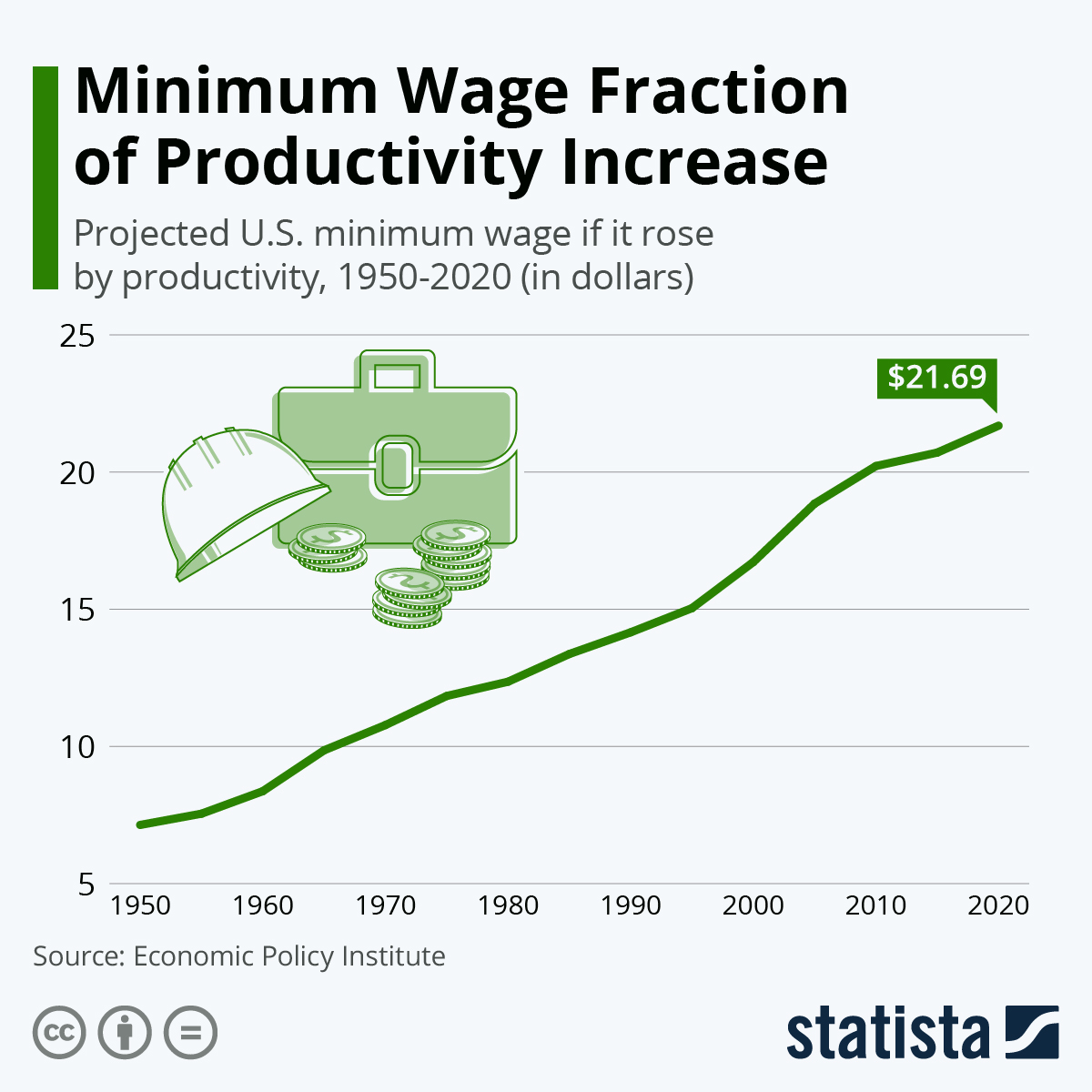The $15 minimum wage is being left out of the upcoming COVID-19 stimulus relief package expected to be passed by Congress sometime this month. While it had a majority support from Americans and the dominant congressional party, enough pushback by Republicans and a few Democrats led to it being shelved for another bill sometime in the coming years. Many thought this may have been the best time to introduce a radically new minimum wage, with millions in the U.S. still struggling with unemployment and the fallout of the pandemic. They’ll have to wait even longer for the federally mandated wage hike, despite data showing how the minimum wage would be even higher than $15 if it had scaled appropriately with productivity over the last decades.
According to the Economic Policy Institute, the minimum wage adjusted for the increase in productivity since 1950 would come out to roughly $21 per hour in 2020 – triple what it is now at $7.25 per hour. While productivity has soared since 1938, wages and salaries in the U.S. have been relatively stagnant since 1970, when wages truly began failing to keep up with productivity.
The argument against raising the minimum wage to $15 centers around the fear of inflation, and that too much new money in the economy would destroy the value of the dollar and businesses would be forced to raise prices. However, according to the Economic Policy Institute, wages represent a relatively small portion of the total economy and would be unlikely to cause any substantial change to inflation over time. The number of people lifted from poverty along with the subsequent increase in middle-income salaries would be enough to offset any price hikes necessitated by both small and large businesses.
Many businesses across the U.S. continue to support a $15 minimum wage, with data showing increased productivity, morale and retention.





















